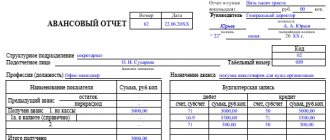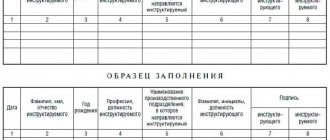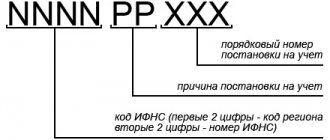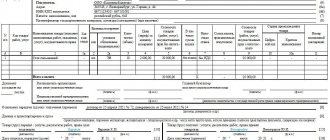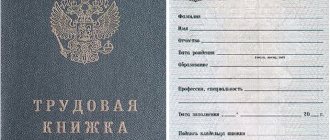In this article we will understand what it is - a universal or unified transfer document (UDD) for goods in 1C. Let's consider why such documentation may be required, when they should be used, how to correct errors and in what time frame it needs to be completed. Its creation has greatly simplified interaction with suppliers and contractors; it can be used in accounting and tax calculations. On its basis, it is allowed to conduct accounting and write off costs. It is more convenient to fill out in a variety of operations than the SF or other primary form. The main thing is to secure in special accounting papers that it will be used, then it will officially become part of the company.
What kind of document is this - UPD, what to do with it and its decoding
This is the name of the paper that combines the functionality of an invoice and primary documents. The Tax Service has established a recommended form, what such a form should look like and what it should contain. But it is worth remembering that this is the recommended view.
Each company can modify some fields, provided that all of them are contained on the sheet. An organization can update the blocks by adding their information as they deem necessary.
It is important to fix the format in the accounting policy and use the same type every time with the following lines:
- Name;
- Date of preparation;
- content;
- meter;
- persons who are responsible for proper preparation.
The form recommended by the Federal Tax Service is one of the possible ones when transferring products and property rights. It specifies that some details are required, but it does not contain an exhaustive list of the values that must be included. Therefore, the parties can record their additional property rights and enter transactions. In addition, they may use other primary papers; a single conveyance document is only one of the forms available to them.
Why may you need a paper version of the form?
It is often used instead of primary documentation.
With its help, it is easy to supply a wide variety of products or transfer property or other rights to objects.
The law does not force you to use this particular method of document flow.
It is signed in the first status by the selling side of the MOL, those responsible for the Federation Council and the like. In the second, the seller signs the persons who must monitor the condition of the primary securities. And it is always the persons who are involved in primary matters who sign for the buyer.
Accounting documents created in electronic format, abbreviated as UPD
This format differs from the standard form; it can be:
- one-sided, in which there is only one xml file containing a signature and information about the seller;
- two-sided, in this case one file contains data about the selling and buying parties and their signatures.
It is signed by persons authorized to do so. If different people are responsible for the SF and the primary department, then there will be several lines - according to the number of MOLs.
It is necessary to indicate what status the person has:
- employee;
- an employee of the organization that compiles the seller’s file;
- a member of another company, when activating this option, you must enter the data in the “Base of authority” field;
- authorized individual.
The main differences between paper and electronic forms are that the second type has more advantages and is much more convenient to use in modern realities.
At a minimum, it’s easier to send it to the client - you don’t have to spend money on couriers or other delivery methods. The exchange speed increases significantly, no consumables are needed - paper, printer ink, storage space. Nothing is lost and the error rate is close to zero.
It is worth integrating an EDI system if the organization plans to develop and increase sales. Contact Cleverence to select software to perform and optimize your tasks.
UPD and SSF
Invoice is an NU document. It confirms the release of goods to the buyer, the provision of services to him, the performance of work on operations subject to VAT, and is not used anywhere else. SChF details contain information:
- about the subject of the transaction;
- about his country of origin;
- about the amount;
- on the quantitative characteristics of a business transaction;
- about the tax rate;
- about excise tax;
- about the relevant group of goods;
- allowing taxpayers to be identified.
issues invoices and in what cases ?
The information contained in the SSF is used for VAT calculations and control of these transactions. When registering the release of goods, an accounting document is attached to the SChF: delivery note, delivery and acceptance certificate, etc.
The Universal Transfer Document (UDD) is a form created on the basis of the SSF. All information from the SSF is reflected in the UPD. For convenience, the “invoice area” is highlighted with a dark outline. In addition, the UPD contains information on the issue of goods and materials (act, bill of lading, partially - TTN, document on issue of materials f. M-11, etc.), i.e. information when the shipment was made, which official took responsibility for it and signed it, and on the basis of which agreement the shipment was made.
How to reflect UTD in the purchase book, sales book, invoice journal ?
UPD can be used both in BU and NU. The nature of use is marked with a number (1 or 2) - on the left side of the form, at the top:
- With status 1, the UPD acts as both an invoice and a document confirming the transfer.
- With status 2, the UPD is filled out only as a BU document.
It is obvious that SSF can be replaced by UPD with a simultaneous reduction in document flow. However, complete replacement in accounting practice does not occur. There are objective reasons for this.
Why is it needed: the use of a universal transfer document, abbreviated as UPD
It cannot be called a mandatory file for all enterprises. Each taxpayer has the right to decide for himself whether he needs to use it. There are several popular situations when it is relevant:
- goods are shipped;
- the results of the work that were completed are transmitted;
- the company performs intermediary services;
- Property rights are transferred both in exceptional cases and under a license agreement.
The main thing is to remember that to start using it, you need to enshrine it in the company’s policy. And, in addition, it is necessary that the head of the organization draw up an order in which he approves a certain form.
When does the UPD replace the invoice?
You can replace the UTD invoice in the following cases:
- when shipping goods (including for export);
- when transferring property rights;
- when transferring the results of work performed or services provided (when drawing up a universal transfer document for services, it is recommended to attach a detailed report on them).
Sometimes situations arise when UTD and invoices are mixed together under one contract. There is no need to worry about this, since this will not affect the accounting of VAT and expenses. But in order to avoid chaos in the document flow, it is necessary to consolidate this method of registering shipments in the VAT accounting policy and in contracts with counterparties. Then representatives of the Federal Tax Service will have no reason to make claims regarding why different primary documents were drawn up within the same agreement.
Ready-made solutions for all areas
Stores
Mobility, accuracy and speed of counting goods on the sales floor and in the warehouse will allow you not to lose days of sales during inventory and when receiving goods.
To learn more
Warehouses
Speed up your warehouse employees' work with mobile automation. Eliminate errors in receiving, shipping, inventory and movement of goods forever.
To learn more
Marking
Mandatory labeling of goods is an opportunity for each organization to 100% exclude the acceptance of counterfeit goods into its warehouse and track the supply chain from the manufacturer.
To learn more
E-commerce
Speed, accuracy of acceptance and shipment of goods in the warehouse is the cornerstone in the E-commerce business. Start using modern, more efficient mobile tools.
To learn more
Institutions
Increase the accuracy of accounting for the organization’s property, the level of control over the safety and movement of each item. Mobile accounting will reduce the likelihood of theft and natural losses.
To learn more
Production
Increase the efficiency of your manufacturing enterprise by introducing mobile automation for inventory accounting.
To learn more
RFID
The first ready-made solution in Russia for tracking goods using RFID tags at each stage of the supply chain.
To learn more
EGAIS
Eliminate errors in comparing and reading excise duty stamps for alcoholic beverages using mobile accounting tools.
To learn more
Certification for partners
Obtaining certified Cleverence partner status will allow your company to reach a new level of problem solving at your clients’ enterprises.
To learn more
Inventory
Use modern mobile tools to carry out product inventory. Increase the speed and accuracy of your business process.
To learn more
Mobile automation
Use modern mobile tools to account for goods and fixed assets in your enterprise. Completely abandon accounting “on paper”.
Learn more Show all automation solutions
Beginning of formation
You can use a simplified transfer document from any time. An enterprise is allowed to use both the form recommended by the Federal Tax Service and the one that they create themselves. They are allowed to design their own look as long as it includes all the necessary details.
First of all, it should be brought into line with the format in which the SF is filled out. Then you need to fix the developed template in the accounting policy. And if the existing recommended one does not suit the tax authorities, then it is allowed to completely rework it. The main condition is to ensure the presence and correctness of the details and their location. For example, in the interval of columns 1-11 it is not advisable to change names or delete lines.
UPD is a primary document, the order and sample of which the responsible employee must know. Points to remember:
- who draws up the paper and in what number of copies;
- how the lines are filled in, who should indicate what;
- when should values be entered for certain fields;
- what should be prescribed to the buyer’s representatives and not touched by the sellers.
It is not necessary to warn suppliers, clients and other counterparties; usually they are not against the new system, it does not pose any risks for them if everything is done correctly. But they may find it difficult to fill out the first forms right away. Therefore, we advise you to settle all issues in advance. First make sure they can handle it, and then start shipping the goods using the updated documentation. You can even specify the use of this format in the contract.
There is one caveat - each company affixes a seal at its own discretion, you don’t have to do this. It is only important to decide and form everything the same way.
You can also create all standard shipping documents and UPD through special trading programs. With their help, not only are files printed for signature by the receiving party, but also the entire document flow is organized.
Does the counterparty have the right to demand an invoice instead of the UTD?
Question: Our organization, according to its accounting policy, applies UPD. The client, in response to the UPD provided by us for the services provided, sent an official letter stating that the accounting policy of their organization does not stipulate the use of UPD. Therefore, they refuse to accept our documents and ask us to provide an invoice and a document. Is their refusal to accept UPD from us justified? And can we refuse to provide them with an invoice and report?
Answer:
The counterparty’s refusal to accept a universal transfer document (UDD) is lawful, as is your refusal to provide an invoice and act instead of a UTD, if only one type of such document is approved in the accounting policy of the transaction partners.
The legal requirement is only that a local act of the organization (as a rule, an order approving the accounting policy) determines the forms of primary documents used by it. The use of an invoice and UPD with status “1” within the framework of one agreement is not an obstacle to accepting VAT amounts for deduction. The solution to the issue lies not in legislation, but in contractual relations and the content of the accounting policies of counterparties.
If it is fundamental for your organization to issue exclusively UTD, then the circle of your possible counterparties-buyers may be narrowed to the number of them who agree to accept VAT-related documents only in the form of UTD.
Similarly, your counterparty will be able to work and purchase the goods, work, and services it needs for its activities exclusively from those suppliers who issue the usual invoices and acts or invoices.
The UPD form is recommended by letter of the Federal Tax Service of the Russian Federation dated October 21, 2013 No. ММВ-20-3/ [email protected] Displayed with the status “1”, it allows the buyer to deduct VAT and make do with one document that serves as both an invoice and a “primary » - act or TTN, TORG-12 or OS-1.
There are no explanations on the basis of which taxpayers could conclude whether it is lawful or unlawful to refuse to accept or issue primary documents in a certain form if the document contains all the required details.
But many clarifications have been issued by the Federal Tax Service and the Ministry of Finance, confirming the safety of accepting and issuing an invoice with additional details or combining both an invoice and another primary document - UPD.
Thus, the Ministry of Finance in its letter dated June 16, 2014 No. 03-07-09/28664 explains that “The norms of the Code and Decree of the Government of the Russian Federation dated December 26, 2011 No. 1137 “On the forms and rules for filling out (maintaining) documents used in settlements for value added tax" the indication of additional information in the invoice is not prohibited. Therefore, the indication of such information provided for in the UPD, the form of which is recommended for use by the Federal Tax Service, is not a basis for refusing to deduct VAT amounts presented by the seller to the buyer.”
The Federal Tax Service of the Russian Federation in a letter dated October 21, 2013 No. ММВ-20-3/ [email protected] explained that any organization can combine information from primary documents and invoices, since it is duplicated for many items, this will not violate the law. If, in this case, the requirements of the Federal Law of December 6, 2011 No. 402-FZ “On Accounting” and Ch. 21 of the Tax Code of the Russian Federation are not violated, then such a taxpayer cannot lose the opportunity to take into account the documented fact of economic life for accounting purposes, as well as the right to use the VAT deduction.
In this case, the organization also has the right to confirm its income tax expenses.
And the letter of the Federal Tax Service of the Russian Federation dated May 27, 2015 No. GD-4-3/8963 states that even within the framework of one contract (for example, supplies), both an UTD with status “1” and an invoice can be issued.
Taking this into account, you can draw up in the UPD form not only supply agreements, but also the provision of services and performance of work.
Record the agreements reached on the preparation of primary documents for transactions in contracts with counterparties.
Questions about interaction with your partners regarding the use of certain forms of primary documents, invoices or UPD are resolved in agreements with them, and not at the level of legislative prohibitions or permissions.
Since 2013, the use of unified forms of primary documentation is no longer regulated by accounting legislation. The organization has the right to independently determine which forms of primary documentation it will use.
For greater freedom of choice in your accounting policy, it would be logical to approve both versions of the forms of the document that serves as the basis for deducting “input” VAT by your customers. In this case, you will not have situations where you will be forced to resolve issues similar to the one posed, at the risk of losing a buyer or narrowing the circle of your counterparties due to the rigidity of your position.
And you, as a buyer, will not be limited, as your counterparty, in the given question, in the possibility of taking into account both forms when receiving invoices from your supplier with acts or invoices instead of UPD. In the end, the recommended form of UPD should serve to facilitate mutual settlements with counterparties, and not to hinder them.
Thus, the legality of refusal to issue or accept an invoice or UPD depends not so much on the legislation, but on the agreements recorded in the transaction document.
According to the explanations of the regulatory authorities, both you and your counterparty can both accept and issue UTD, while no difficulties should arise in obtaining a VAT deduction or accounting for expenses.
The whole question lies in the will of the parties to meet each other halfway. This can be done by making a small change to your accounting policies.
The answer was prepared by Natalya Salikhova, senior specialist at the legal consulting service of RUNA company
Hello Guest! Offer from "Clerk"
Online professional retraining “Accountant on the simplified tax system” with a diploma for 250 academic hours . Learn everything new to avoid mistakes. Online training for 2 months, the stream starts on March 1.
Sign up
How to fill out
The main feature is the multifunctionality of the documentation. It is worth remembering that usually completing this form does not cause any difficulties or difficulties. It contains lines familiar to all accountants and other MOLs.
In one part of the file there is a thick frame, it duplicates the data from the Federation Council, they are necessary. Information about the content of the operation, its participants and details of organizations is entered there. It is better not to prescribe anything unnecessary to this zone.
Under this block details of the agreement that was concluded by the parties are reflected. Using the indicator, the content of the transaction is identified, so it can be classified as mandatory details, although it is already outside the part.
Below is written everything about the waybills and other accompanying files, if any. It is no longer considered an indispensable indicator; it can be dispensed with.
How to fix errors in UPD
Of course, in the course of the activities of any company, controversial situations and accidents regularly occur, due to which a specialist writes incorrectly. The document can be corrected if done correctly. In the table below we list the specifics of the fixes.
| Status | Format | Explanation | What can be done | Peculiarities |
| 1 | SF and primary documentation | Interferes with identification | create a new form with status “1” | The previous date and number are retained, the number when the corrections were made is also indicated, and the MOL is signed |
| Does not interfere | if necessary, organize a new one with status “2” | Everything is the same, but no additional signatures are required. | ||
| PD only | — | you can use the previous option or make direct edits | Corrections in the form are certified with the inscription “Corrected”, signed by the MOL, dated | |
| 2 | — | just edit |
It is worth remembering that possible blots, typos, and errors should be investigated by the tax audit. That is, it is unacceptable to leave strikethroughs in fields related to information about the parties, the essence of the transaction, content, tax rate or its amount.
UPD instead
The approval of the UPD will allow a number of different operations to be carried out without duplication and in a shorter period of time. What becomes easier with UPD:
- Carry out shipment of any goods, both with and without transportation. Reimbursement of transportation costs in this case does not generate income for the supplier and falls on the carrier.
- Provide all kinds of services, subject to the appropriate license.
- Transfer rights (property) and results after completion of services and work.
- Deal with shipments to contractors, principals and commission agents.
Much depends on the terms of the contract; the UPD appears as a primary document or a combined document, since the invoice is always included.
You must remember to specify one parameter. The entered one indicates that the primary and the account have been combined. A number of two indicates the use of primary documents for sending and drawing up the transfer act.
It is most profitable to use the UTD for entrepreneurs who have switched to UTII and the simplified tax system , since this is quite sufficient for reporting and there is no need to calculate and pay value added tax.
In what case will it not replace?
However, situations arise when a universal document cannot become a full replacement for a valid invoice. This happens when:
- Adjustment of indicators when the goods have been shipped, but their cost has changed due to various reasons. If an invoice was issued, then it is enough to prepare a document indicating the difference in cost and fill out an adjustment form.
- Using an advance payment, when the recipient of the advance payment will issue an invoice and there is no need to prepare a bank statement and payment order.
- The need to make adjustments to the prepared paper. Another invoice is drawn up (with the same number and date), only in a special column (1a) the entry of corrected information is indicated. Errors in the invoice are corrected more easily; you need to cross out the amount and write the correct one, as well as indicate the number of corrections and sign the entrepreneur.
The risks associated with the transfer document cannot be discounted. Errors made during registration, especially when using the primary form, will lead to material losses . After submitting the reports, you will not be able to obtain a property deduction for VAT; additional costs will arise due to income tax.
The use of UTD is not yet mandatory, although experienced accountants and tax specialists were involved in the development of the form, who held extensive discussions on the forum of the official portal.
On the one hand, it is possible to get rid of filling out numerous duplicate invoices and acts. On the other hand, it has not yet become possible to transmit data electronically directly to tax authorities, and situations arise when the application becomes inappropriate.
What is the document status in the UPD and what does it mean?
Using this characteristic, the meaning of paper is explained:
- if it is “1”, then it should be activated as a primary and SF;
- if “2” is indicated, then such a document is allowed to be held exclusively as primary documentation, only for the purposes for which they are used in accounting.
There is a caveat - if you entered “2” by mistake, but all the fields required for “1” were filled in, then you can submit such files for deduction. Only “2” is usually used by those who do not pay VAT and engage in “commission” to ship goods.
What this UPD usually includes: fill it out correctly
It is made up of two parts, as mentioned above. In printed form, this will be surrounded by a bold border.
So that the paper meets the requirements and contains the following data:
- Name;
- name of the legal entity-compiler;
- the date when it was compiled and its number;
- how the fact of a business operation is reflected;
- cost and volume of objects;
- signatures of all responsible people with their positions so that they can be quickly identified;
- the basis of each transaction.
Mandatory lines for the document if it will appear in the first status:
- the payment slip to which it needs to be drawn up;
- excise tax amount;
- tax rate;
- code of the country in which the product was manufactured;
- name of the state briefly;
- declaration number.
The date and numbering of the file will depend on the status number. It is important to remember that the Federal Tax Service imposes requirements and checks the numbering order.
The more convenient to use
Each company will decide this issue for itself. The main thing is to know that if you use a universal transfer form, then all the fields required for the invoice must be filled out.
If we take into account the advantages, versatility and multifunctionality, then UPD goes far ahead. It is easy to complete electronically, reduces the volume of recurring transactions, significantly reduces costs, and does not cause forms to be lost. The package is always at hand, there is no need to look for anything or reprint it.
What is the difference?
Despite the external similarity of the two forms, there are certain important differences between the papers. Invoice Features:
- Confirms the conclusion of a sale and purchase contract. VAT must be included.
- After the transaction, the shipper and recipient make an entry in the purchase journal. As a result, a tax benefit is provided (Article 172 of the Tax Code). The deduction saves considerable amounts, especially when purchasing in bulk.
- The document is filled out by hand and electronically in compliance with the basic requirements (Article 169 of the Tax Code). In case of sudden changes in value, an adjustment invoice is prepared.
Features of UPD:
- Combines primary documents such as delivery note and invoice. For this, additional necessary details are included (No. 402-FZ).
- If completed correctly, it will serve as the basis for deductions for fees on profit and added value.
- Varieties of UPD make it possible to combine or make additions. The graphs separated by black lines remain unchanged.
Until a code is assigned, the UPD cannot be sent electronically to the tax office . In 2022, amendments were made to the invoice and it was allowed to independently add columns for the contract identifier, code for the type of goods and the signature of the person certifying the invoice for an individual entrepreneur to the simplified document.
Ready-made solutions for all areas
Stores
Mobility, accuracy and speed of counting goods on the sales floor and in the warehouse will allow you not to lose days of sales during inventory and when receiving goods.
To learn more
Warehouses
Speed up your warehouse employees' work with mobile automation. Eliminate errors in receiving, shipping, inventory and movement of goods forever.
To learn more
Marking
Mandatory labeling of goods is an opportunity for each organization to 100% exclude the acceptance of counterfeit goods into its warehouse and track the supply chain from the manufacturer.
To learn more
E-commerce
Speed, accuracy of acceptance and shipment of goods in the warehouse is the cornerstone in the E-commerce business. Start using modern, more efficient mobile tools.
To learn more
Institutions
Increase the accuracy of accounting for the organization’s property, the level of control over the safety and movement of each item. Mobile accounting will reduce the likelihood of theft and natural losses.
To learn more
Production
Increase the efficiency of your manufacturing enterprise by introducing mobile automation for inventory accounting.
To learn more
RFID
The first ready-made solution in Russia for tracking goods using RFID tags at each stage of the supply chain.
To learn more
EGAIS
Eliminate errors in comparing and reading excise duty stamps for alcoholic beverages using mobile accounting tools.
To learn more
Certification for partners
Obtaining certified Cleverence partner status will allow your company to reach a new level of problem solving at your clients’ enterprises.
To learn more
Inventory
Use modern mobile tools to carry out product inventory. Increase the speed and accuracy of your business process.
To learn more
Mobile automation
Use modern mobile tools to account for goods and fixed assets in your enterprise. Completely abandon accounting “on paper”.
Learn more Show all automation solutions
How quickly and on what date is it issued?
Like any other primary document, it should be drawn up directly during the operation, or immediately after completion. But this is a case that is not always realistic to repeat.
Therefore, in the recommended form, 3 date options are allowed:
- when the paper was compiled;
- a transaction occurred;
- the goods have been received/accepted for balance.
Can these two documents be used simultaneously?
Is it possible to use both UTD and invoices? The recommendations of the Federal Tax Service of Russia do not prohibit the use of UTD jointly to reflect the facts of economic life in accounting and tax accounting.
At the same time, the use of UPD does not limit the organization’s right to use other forms of primary accounting documents.
The possibilities of UPD have attracted many companies and organizations . For tax authorities, it is not of fundamental importance which form was used if no gross errors were made during registration.
The problem more often arises with partners and clients who prefer to use delivery notes, acts and invoices. This especially affects budgetary organizations.
The use of two forms together is completely justified. Only for this, the manager in the private sector companies needs, at the suggestion of the accountant, to approve the UPD and include all the necessary details in it. In this case, it is imperative to notify the second party to the contract, especially when it comes to a foreign counterparty.
IMPORTANT. To avoid disputes, a clause should be written into the contract in advance, which will indicate the forms of primary documents within the framework of a specific transaction.
Advantages
This type of documentation significantly reduces the cost of time, consumables and even storage space for the archive. With its help, you can speed up and simplify document flow, and in addition, the document has other advantages:
- the design style becomes uniform for all types of sales;
- the possibility of error is eliminated, since most of the fields are pre-filled by the program;
- may be used for tax and accounting purposes;
- does not create problems for suppliers and other counterparties.
Who signs?
The lines in which the head of the company and a representative of the accounting department must sign are always filled out. This is mandatory in accordance with the requirements of the Federal Tax Service.
The position and full name are also indicated. with the signature of the persons who were involved in the shipment, drivers authorized to transfer rights.
In the column just below, the MOLs are entered, which are responsible for the correct execution of the transaction on the selling side. If this duplicates existing data, then it is permissible not to sign, just indicate who it is.
A little further on, the buying party signs. The same responsible persons who were responsible for acceptance checked the quality and quantity of the batch. Nearby there is a mall, which formalized economic life.
What is better – invoice or UTD?
Using universal transfer documents in an organization has a number of advantages:
- simplification of document flow;
- reduction of the archive of accounting papers;
- preparation of documents in a uniform style;
- reduction of errors in document preparation;
- saving time on preparing documents, reducing paper costs.
The UPD is very convenient to use, since when registering various transactions it is filled out according to a single template. Responsible persons will not have to think about how to fill out the invoice in the TORG-12 or M-15 form. A sample of filling out the UPD for services can be taken as a basis.
It can be concluded that the use of UTD is more profitable compared to the use of conventional invoices. The need for UPD has been brewing for a long time, and it is the future. But sometimes situations still arise when it is impossible to do without issuing invoices.
Is it allowed to compile UTD in foreign currency?
This issue often causes a lot of controversy among company leaders. Sometimes this even leads to refusal to use the format. The legislation determines that all primary documentation on the territory of the Russian Federation must be filled out only in Russian rubles. But the laws of the Federal Tax Service allow that the SF will be issued using dollars, euros or other money.
If we take both of these facts into account, it becomes clear that this is theoretically possible. But it is advisable to supplement the form with lines where the amount will be expressed in the official national currency. This will remove all the questions, and you will only have to add one column.
Results
We looked at what this means - a universal deed of transfer and agreement (UDA), how it works, who signs for it, how a number is assigned and interaction with the organization begins.
We studied the difference between its paper and electronic versions, when it can be used, and when it is better to use an invoice or primary documentation. We answered the main questions that arise for those who are just planning to switch to new document flow conditions. If you have any questions, our specialists will answer them. Number of impressions: 17385
Definition of each concept
An invoice is a document certifying the actual shipment of goods or provision of services and their cost. Filled out according to a certain standard template approved by Government Decree in 2011 (No. 1137). What is it and what is the difference?
Issued by the seller and entrepreneur when goods are to be shipped or certain services are provided. The buyer must be informed so as not to have problems with the tax authorities. There is a standard, corrective and advance type of invoice, filled out when making an advance payment .
UPD is a universal transfer document that replaces a delivery note and an invoice. The document was created through the joint efforts of accountants and specialists in various fields, and began to be implemented along with the law on accounting.
Combines the invoice taken as a basis, along with transport (commodity) waybills, transfer and receipt of papers confirming the work.
IMPORTANT. Adding additional sections to the UPD allows you to change the size of the cells and enter new lines, but not delete approved items in the invoice.




